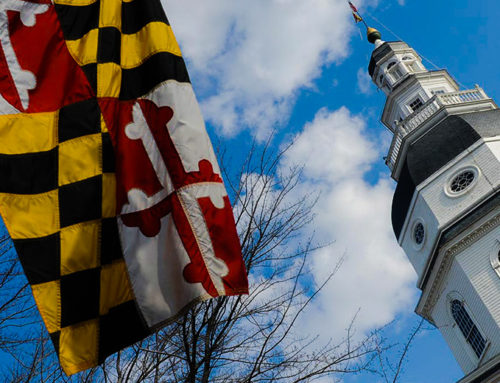View by Topic
Recent Articles
-
Appeals Court Finds Climate Change is Not JusticiableSaturday, May 11th, 2024
-
Colorado Building Energy Performance Standards (BEPS) Laws ChallengedSaturday, May 4th, 2024
-
New Environmental Laws from the 2024 Maryland Legislative SessionSaturday, April 27th, 2024
-
EPA Designates PFOA and PFOS as Hazardous Substances under Superfund LawSaturday, April 20th, 2024
-
Federal Government Finalizes New Efficiency Standards for LightbulbsSaturday, April 13th, 2024
View by Month/Year
“Green Building Law Update” Headlines
Recent Articles & News from
Stuart Kaplow’s blog
at GreenBuildingLawUpdate.com
- Constitutional Rights vs. Climate Change: Inside the Juliana Case Dismissal May 12, 2024
- Does Federal EPCA Trump Colorado Building Energy Performance Standards (BEPS)? May 5, 2024
- New Environmental Laws in Maryland: 2024 Brings Opportunities for Businesses April 28, 2024
- EPA Takes Action: PFOA and PFOS Now Hazardous Substances Under Superfund Law April 21, 2024
Subscribe to the Green Building Law Update!
Stuart Kaplow brings his expertise and extensive experience to the table with his unique digital publication, "Green Building Law Update". Subscribers receive regular updates to keep them informed about important issues surrounding Environmental Law, Green Building & Real Estate Law, as well as the emerging demand for Environmental Social Governance (ESG).
Get fresh content through the lense of Stuart Kaplow's cutting-edge expertise, innovative commentary and insider perspective. Don't miss another issue! Subscribe below.
Draft Master Plan 2010 Strengthens Preservation
Baltimore County has released the draft Master Plan 2010 for public review and comment prior to adoption by the County Council.
The County charter requires that a master plan be adopted at least every ten years. The purpose of the master plan is to “guide development of the county.” And to achieve that purpose, the predominate theme of Master Plan 2010 is the continued preservation of the rural areas.
In the urban areas, the Plan advocates community conversation and continued reinvestment. And in a departure from tradition land use plans, the topics of public safety, education, economic development, public health, and social services are addressed in the 175-page draft document.
For each topic area, policy statements are provided, accompanied by the major “actions” proposed to implement the policies. The plan is bifurcated into a separate discussion of each topic area within the “urban” county and then the “rural” county.
Significantly, the draft makes clear that the master plan is an advisory tool, such that “regulations must take precedence over the advisory status of the master plan.” And that “the zoning text and map always take precedence” over the master plan. That the role of the master plan is stated at the beginning of the draft obviates the need for the debate that surrounded the adoption ten years ago of Master Plan 1989-2000.
Master Plan 2010 details hundreds of “actions” that include zoning ordinance text amendments, zoning map changes, and regulatory changes aimed at rural preservation and community conservation.
Given the importance that Master Plan 2010 will have in guiding development in the County into the next Millenium, all property owners should review the planning document for the impacts that it will have on their land.
The Rural County sections of the draft set out dozens of land use actions to “reinforce the goal ‘of protecting agriculture'” and sensitive environmental areas. Among those actions are:
Expanding agricultural preservation areas to include land adjacent to the farms; limiting density in those preservation areas to one house per 50 acres; developing a PUD-RP (planned unit development – rural protection) that would require that institutional uses be considered as a PUD-RP; revising the RC-4 zone to permit only densities of one house per 25-50 acres, etc.
Under the topic of rural residential, the plan proposes to limit new residential growth by permitting “new residential development only if a development right is transferred from a designated agricultural or resource preservation area” under a new transferable development right (TDR) program.
The rural sections of the draft also propose “protecting off-site viewsheds” in historic areas and “scenic corridor management plans for scenic resources” along rural roads.
Master Plan 2010 draws “a line in the sand” at the urban-rural demarcation line (URDL) and noting that areas outside of the URDL are not supplied with public water, sewer, or other urban services, says those areas are to remain rural.
Those rural areas account for approximately two-thirds of the land area of Baltimore County. About 90% of the County’s population lives in the one-third of the land area inside the URDL (areas termed “urban” in the draft plan), while the other 10% reside in the rural areas.
The Urban County sections of the Master Plan 2010 articulate a broad spectrum of actions that continue the decade old idea of community conservation. All land areas, within the URDL, that are not growth areas (Owings Mills and White Marsh), or the new “Towson urban center” or mapped employment centers, are community conservation areas.
Major actions include: modifying the zoning on vacant DR-10.5, DR-16, RAE, and OT zoned properties, updating the zoning regulations for the business zones, promoting shared business driveways and parking, discouraging attempts to rezone industrial land for other uses, etc.
Other actions include: creating a historic planned unit development (PUD-H) to allow adaptive reuse of historic structures in residential zones, assisting older African-American communities in improving basic services, and preserving the County’s 173 miles of waterfront.
At the time of preparation of this article only limited copies of the draft Master Plan 2010 are available. A summary document has been prepared and will be available both in hard copy and at a web address to be announced.
It is not clear what the timing will be for the Planning Board’s consideration and County Council’s adoption of Master Plan 2010. But, adoption is likely well in advance of the mid-Summer, 1999 commencement of 2000 Comprehensive Zoning Map Process.









